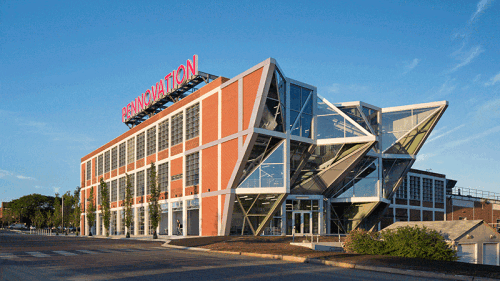Office
How can land use foster the innovation economy? By partnering with anchor institutions and embracing the idea of a “minimum viable product,” where a stripped-down version is offered to early adopters and then modified based on the usage and other feedback, said development experts at a ULI Philadelphia event in February.
Real estate activity in America’s heartland is growing at a solid clip, driven by increases in employment, a recovering economy, and pent-up demand for new product.
Dallas was an appropriate location for a 2016 ULI Fall Meeting discussion on energizing corporate campuses, with several large-scale headquarter developments underway in the region.
In the late 2000s, Anthony E. Malkin, chairman and chief executive of Empire State Realty Trust, joined forces with a coalition of businesses and environmental organizations to launch an ambitious $20 million retrofit of the Empire State Building with the aim of reducing the iconic New York City office tower’s energy consumption and greenhouse gas emissions by more than one-third.
One of the largest eat/work/ play/live developments in Texas, the $3 billion Legacy West project is attracting companies like Toyota, FedEx, JPMorgan Chase, and Liberty Mutual by focusing on the interests of generation X and millennial employees.
Vacancy in the U.S. office market inched up by 10 basis points (bps) during the first quarter of 2016 (Q1 2016), rising to 13.2 percent, according to the latest analysis from CBRE Group Inc. Even with the increase, the national office vacancy rate remains at the lowest level since 2008.
Real estate developers around the world are responding to increased consumer interest in cycling and walking as preferred modes of transportation by building projects adjacent to trails, bike paths, bike-sharing stations, and other infrastructure that supports human-powered mobility, according to
Active Transportation and Real Estate: The Next Frontier, a new ULI report.
Active Transportation and Real Estate: The Next Frontier, a new ULI report.
Suburban office parks, which developed and spread far and wide as businesses left American cities, are now losing ground to those same cities, according to a new report by Smart Growth America.
At ULI’s Spring Meeting in Houston, AECOM global practice lead Andrew Laing traced the evolution of white-collar work spaces over more than a century in patterns driven primarily by technology.
Downtown urban office and mixed-use markets are “hot,” but so are some suburban markets—including the iconic Silicon Valley. At the ULI Spring Meeting in Houston, a panel moderated by AECOM senior vice president Stephen Engblom explored regional responses to market demands outside traditional downtown markets.






